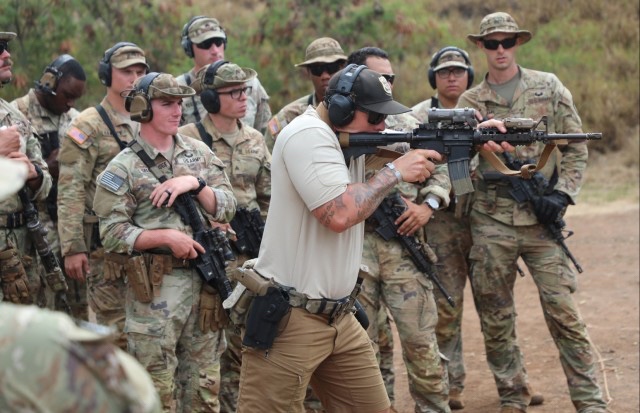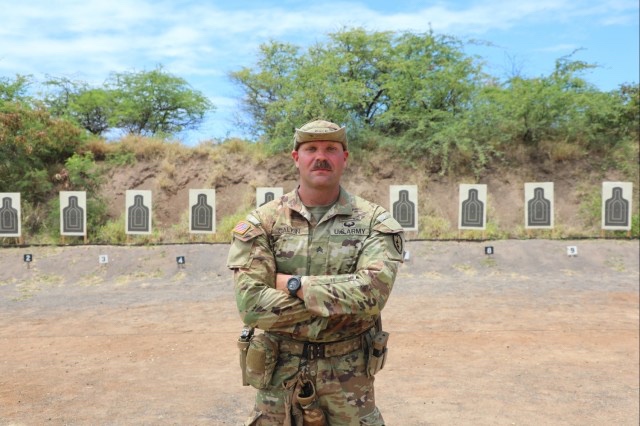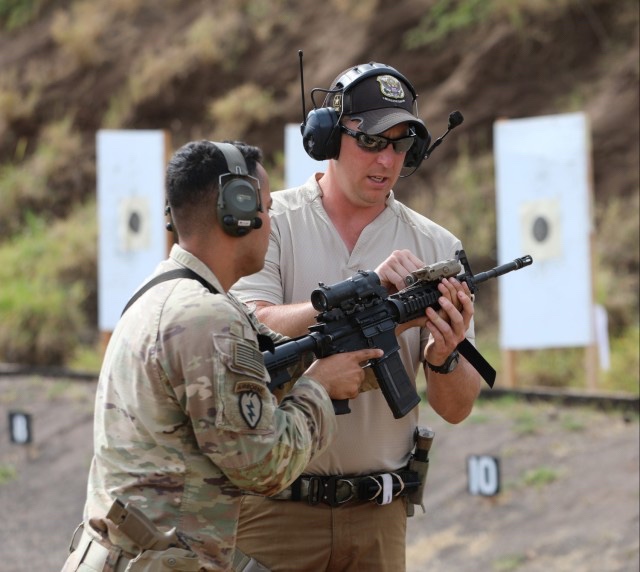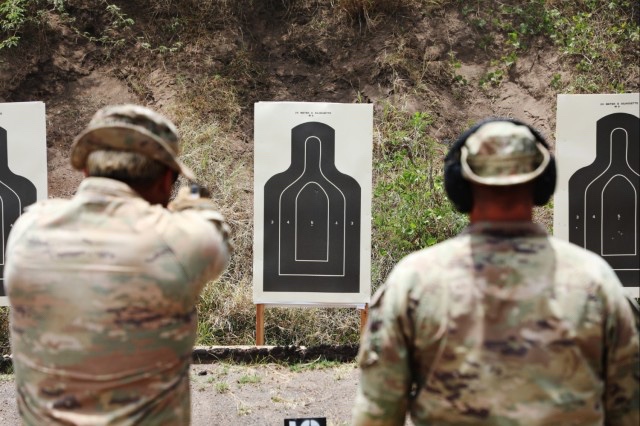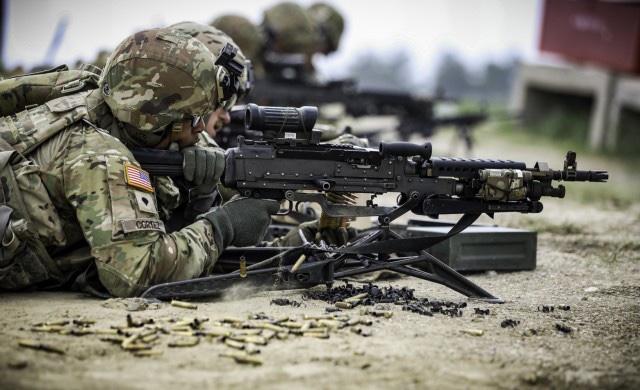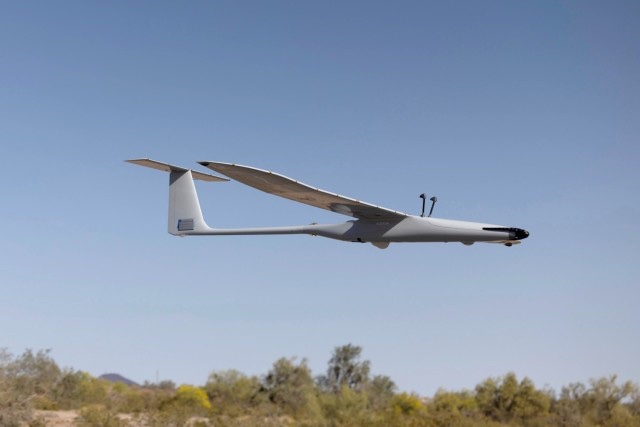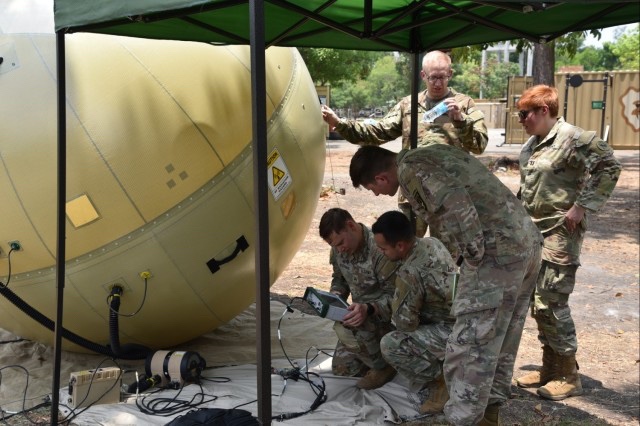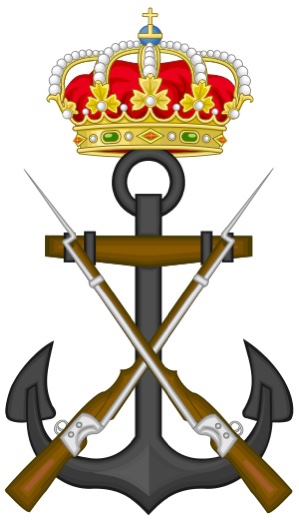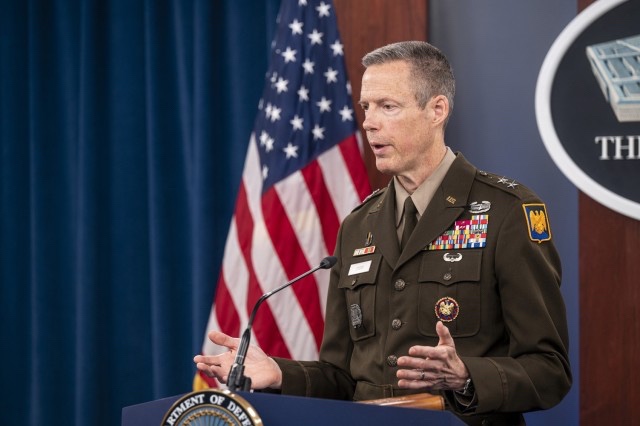
WASHINGTON — This weekend, the National Guard’s State Partnership Program marks 30 years of contacts, exercises and aid to nations around the world.
The SPP is a unique program that began in 1993. It paired state National Guard units with the newly independent nations of the former Soviet Union and nations emerging from the Warsaw Pact.
“The program that began in 1993 with just 13 countries and has now grown to 100 countries,” said Army Maj. Gen. William L. Zana, the Guard’s director of strategy, plans and international affairs. The general spoke about the program at the Pentagon today.
The importance of allies and partners is a cornerstone of U.S. strategy. “It is a theme that runs deeply through our national security strategy, national defense strategy, and national military strategy,” Zana said. “And I’d argue [it] is deeply encultured within what we do as the U.S. military, how we operate and our values.”
The SPP is based on working side-by-side with willing partners around the world. The National Guard Bureau administers the program in close consultation with Defense Department officials and the State Department. The aim is to build trust, confidence and capabilities with partner nations.
In the program’s early days, the emphasis was on helping nations throw off 47 years of Soviet domination. Many nations in that first class of partners are now proud members of the North Atlantic Treaty Organization.
The program soon punched above its weight and spread to U.S. Southern Command, U.S. Central Command, U.S. Africa Command, and U.S. Indo-Pacific Command. “The Guard is currently partnered with more than half of the world’s nations, and we expect to see continued growth in the coming years,” Zana said.
Combatant commanders universally praise the program. “[The SPP] is 1 percent of the nation’s security cooperation budget and results in 20 to 30 percent of the touch points or engagements that combatant commands have,” the general said. “So, they inherently see that value and the multipliers that go with that.”
These contacts are not limited to senior military and civilian officials, rather they stretch from privates and airmen up to generals. Guardsmen — unlike active-duty personnel – tend to stay in place, and many of the Guard’s noncommissioned officers and officers have “grown up” with their partners.
Zana, who has worked two of the last four years in Africa, said exercises are good training but often of short duration. “It’s not the same as having a relationship that has endured over many, many years where … families know one another, you’ve broken bread on both sides of an ocean,” he said. “You can’t build that trust overnight. I think it’s something that we, as the United States military, are particularly good — and our partners are really good — at.”
The partners have done more than simply exercise together. When U.S. National Guard units began deploying in harm’s way, the partners came with them. “The richness of those connections it can’t be… be overstated,” the general said. “It’s one of those things that made the program popular and built the enduring enthusiasm for it.”
National Guardsmen are Citizen-Soldiers who bring experiences and education from their civilian occupations to the process. “Often, some of the most creative activities and the things that happened with the program are an expansion beyond mil-to-mil or the creativity that goes with our Soldiers, Airmen and their counterparts from other countries,” he said. “That said, there are limitations with the funding of the program.”
The program calls for around $50 million, with additions coming from Congress. Zana would like to see all the money “on budget” to create a better planning horizon. “This year, we’ve got hundreds of events that we’ve either had to cancel or postpone,” he said. “And these are all events that are very much aligned with our national defense strategy and very much aligned with our partners and our combatant commands’ theater strategies.”
Ukraine was an early member of the program, partnering with the California National Guard in 1993. California Guardsmen helped train Ukrainian service members in NATO standards. They also trained them in using weapons like the Javelin and Stingers, which were so crucial in the early days of the Russian invasion of the country.
The California connection thrust the SPP into the news, and Americans got an idea of the depth and breadth of the military-to-military relationship. “In advance of Russia’s invasion of Ukraine, we were doing close partnerships, not just with the, with California and Ukraine,” Zana said. “One of the things we often refer to is ‘You marry one state, but you get the whole family with the Guard.’ So, when there’s a capability that doesn’t exist within the Army Guard or Air Guard within a state, we reach across the 54 states, territories and the District of Columbia to be able to get additional resources or capability.”
One aspect that hasn’t gotten the attention it deserves is the way Ukraine has adopted the U.S. emphasis on unit and tactical-level leadership, driven by noncommissioned officers. “If you look at the small unit, tactics and success within Ukraine, I think part of that is attributed back to much of the work that was done between Ukraine, California and other partners in the region,” he said.
The 30th anniversary will be marked at National Harbor in Maryland on July 17-18. Partner officials will join National Guardsmen, DOD officials, State Department officials and ambassadors to mark the event. Army Gen. Mark A. Milley, the chairman of the Joint Chiefs of Staff, will be the keynote speaker on July 17.
By Jim Garamone, DOD News
Additional Info:
State Partnership Program Celebrates 30 Years
State Partnership Program 30th Anniversary media roundtable
Major General William Zana Briefing on 30th SPP Anniversary
30th Anniversary of the State Partnership Program
State Partnership Program turns 30
A Five-Part Series By Master Sgt. Jim Greenhill and Sgt. 1st Class Zach Sheely, National Guard Bureau


